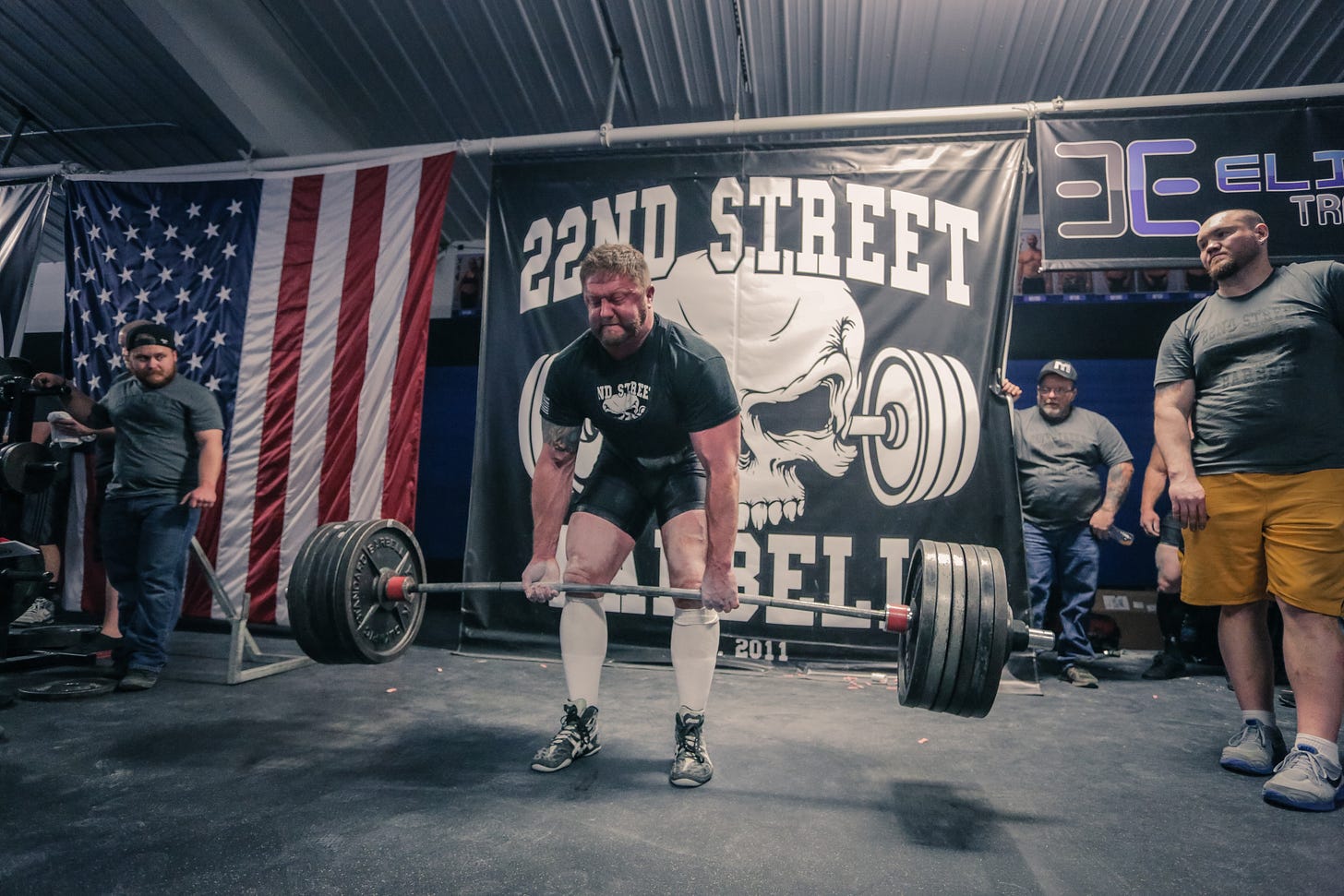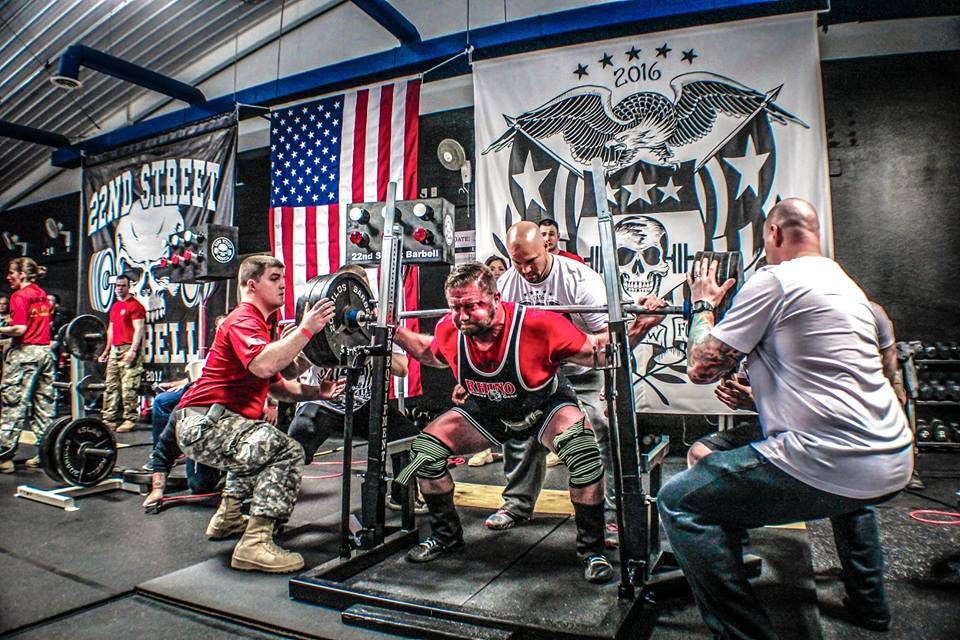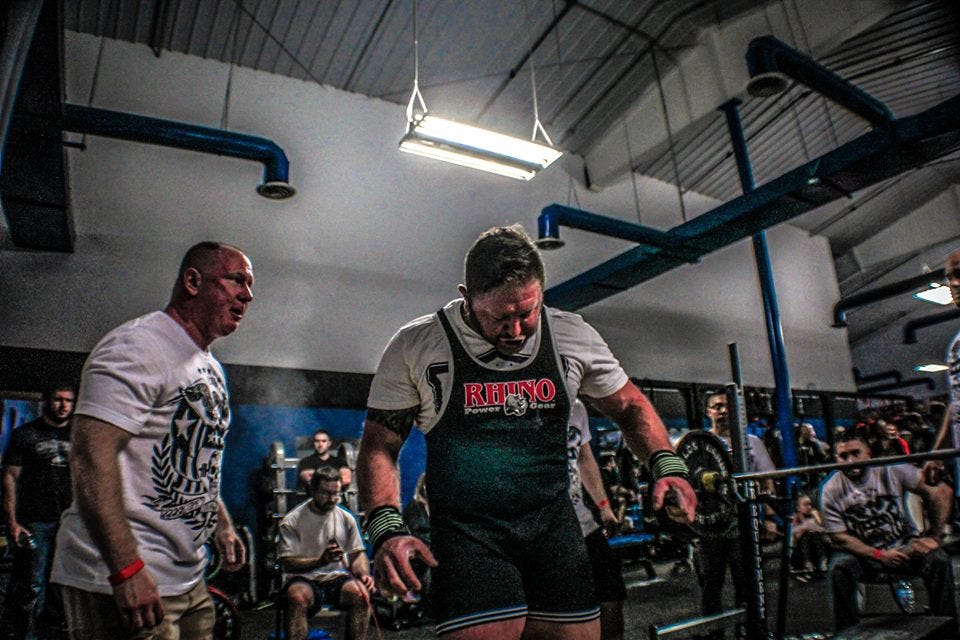Rust and Iron: A First-Timer’s Guide to Powerlifting Meets
From Training to Platform: Hard-Earned Advice for Meet Day Success
When my college football career ended, the competitive drive didn’t go with it. I still needed a challenge—something that asked more of me than just showing up. Powerlifting filled that space.
Over the next decade, I competed in amateur meets. I wasn’t chasing trophies—I was chasing progress. The sport taught me a great deal, not just about training, but about discipline, patience, and consistency. I became a better coach not because I could write effective training plans, but because I lived them. I tested them under the bar.
Recently, a former athlete of mine—now a college student—told me he’d signed up for his first meet. He asked for advice, and as we spoke, I found myself distilling ten years of lessons into a few essential principles.
If you're stepping onto the platform for the first time—or coaching someone who is—this is what I’d want you to know.
1. Don’t Cut Weight
This is the mistake most first-time lifters make: cutting weight to compete in a lower class. I’ve done it. It rarely ends well. You sacrifice strength, recovery, and mental clarity for a few numbers on the scale.
Unless you're within a very manageable range, cutting will do more harm than good—especially in your first meet. Your focus should be on lifting well, not weighing less. Let your body operate where it’s strongest. You’re here to perform, not shrink.
2. Set Realistic Goals
Ambition is good—but it needs structure. Just because you want to bench 300 doesn’t mean you’ll get there in two months if you're currently pressing 250. Progress is earned over time, and effective goal setting means starting from where you actually are.
A coach or experienced lifter can offer valuable perspective here. Let someone else help you zoom out. Your meet day numbers should reflect your current capabilities, not your ideal scenario.
3. Peak with Precision
Your peaking phase should build confidence—not wear you down. As the meet approaches, training volume should taper, and intensity should sharpen. You’re not chasing PRs two weeks out. You’re preparing your nervous system to be efficient and explosive.
Missing lifts late in the cycle, especially lighter weights, damages confidence. It’s better to do slightly less and leave the gym feeling strong than to grind through reps and carry fatigue into meet week. Trust the process and respect recovery.
4. Know the Commands. Train with Your Equipment.
Meet day isn’t the time to learn the rules. Every lift has specific commands: squat, press, rack. Failing to follow them will get you red-lighted, no matter how easy the lift feels. Practice every command in training until they’re automatic—especially the bench pause.
Also, train in your meet-day equipment. Singlet, belt, wraps, sleeves—everything. These details can feel unfamiliar or restrictive if you’re not used to them. The more you can replicate the meet environment ahead of time, the more composed you’ll be under pressure.
5. Plan Your Attempts Strategically
Your first attempt should be a weight you can confidently triple, even on a bad day. The goal is to build momentum, not to impress anyone with your opener.
Plan all three attempts for each lift in advance. Many meets require openers to be submitted at weigh-in, and having a clear progression in mind can reduce decision fatigue under pressure. If the meet uses kilos, account for conversion differences—they can throw your numbers off by a few pounds.
6. Understand the Rulebook
Every federation has its own standards—on gear, commands, lift depth, and even foot placement. These details matter. Read the rulebook for your specific federation. Watch footage from previous meets. Train to the standards you’ll be judged by.
Too many lifters lose lifts they made—because they didn’t know the rules. Avoid preventable errors by preparing thoroughly.
7. Don’t Handle It Alone
A meet involves far more than lifting. You’ll be tracking warm-ups, flight schedules, attempt timing, and recovery between lifts. It’s easy to get overwhelmed.
Bring someone to help—ideally someone who’s been through a meet before. A handler can manage timing, adjust warm-up loads, and submit your attempts. Your only job should be to lift and recover. That simplicity matters more than you might think.
8. Bring Fuel. Stay Patient.
Meets are long. Eight hours is typical. Twelve isn’t unusual. You’ll need food, fluids, and a plan to stay mentally focused throughout the day.
Eat a full breakfast 2–3 hours before lifting—something you’ve eaten before training and know sits well. Then bring snacks you’ve tested in training: simple carbs, moderate portions, and nothing that could upset your stomach. Meet day is not the time to experiment with new foods, supplements, or routines. Stick with what’s worked for you in prep.
Personally, I prefer quick, digestible options between events—granola bars, fruit, or even a Snickers. Fast energy. No surprises.
Skip the high-stim pre-workouts. What works for a short gym session can leave you drained hours later. Let your energy rise naturally with the moment. Keep a steady pace and save your adrenaline for the barbell.
Final Thoughts
Your first meet isn’t about winning. It’s about showing up, learning, and gaining experience under the bar. Focus on execution, composure, and safety. Let performance come from preparation—not just adrenaline.
Lifting in a meet is different. It’s just you and the barbell versus gravity. It reveals what your training’s built, and where it still needs work. That honesty is what makes it valuable.
Compete with intention. Learn from the experience. And when it’s over, take what you’ve learned and use it to build the next chapter.
See you on the platform.










